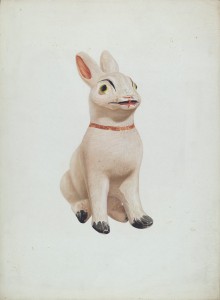 I’m reading Pierre Cabane’s Dialogues with Marcel Duchamp—conversations with Duchamp in the last year of his life– and Give My Regards to Eighth Street, Morton Feldman’s collected writings, and it’s all mixing in my head–chess, chance, inspiration vs grey-matter; Feldman, Duchamp, Cage, Grete Sultan…
I’m reading Pierre Cabane’s Dialogues with Marcel Duchamp—conversations with Duchamp in the last year of his life– and Give My Regards to Eighth Street, Morton Feldman’s collected writings, and it’s all mixing in my head–chess, chance, inspiration vs grey-matter; Feldman, Duchamp, Cage, Grete Sultan…
Here’s a Duchamp quote from Dialogues:
“In chess, there are some extremely beautiful things in the domain of movement, but not in the visual domain. It’s the imagining of the movement or of the gesture that makes the beauty, in this case. It’s completely in one’s grey matter.”
And from this way of thinking about art, you get a bunch of writers who refuse to be “inspired,” like the members of the Oulipo group in Paris– Harry Mathews writing in English and Georges Perec in French– and New York School writers, poets like John Ashbery and Kenneth Koch. They create novels and poems that are dense, often difficult, sometimes verging on impenetrable. This is work that’s basically emotion-free. Its rewards lie elsewhere: in humor, irony, puzzles, cleverness– all of which comes straight from Duchamp.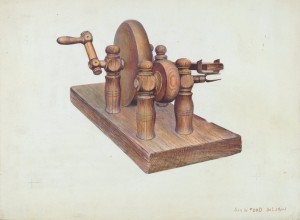
So what about the New York School composers, especially Cage and Feldman– does the same apply to them? Cage was very involved with Duchamp in New York, with surrealism, proto-happenings, and, of course, playing chess.
Early on, Cage wrote the very emotional prepared piano pieces (like The Perilous Night, directly relating to the breakup of his marriage). When those pieces were laughed at and treated as obscure and meaningless, he makes a conscious decision to remove emotion-based
“inspiration” from his work– and this happens just around the time when he gets to know Duchamp in New York.
 But in Cage and Feldman—yikes!—emotion keeps breaking out! I remember a loft performance by Cage—this would’ve been in the 1980s, in a small performance space in the West Village– of a piece he’d originally written for a Merce Cunningham dance. He placed a group of cactus plants on a table, attached small microphones to the plants, and stroked their spines with tiny pieces of metal and wood, creating a very quiet series of clicks and pops. Only the imagining of movement– you might call it a Duchampian experiment. But that collage –of tiny sounds struggling to be heard –was heartbreakingly beautiful–not something you will ever feel looking at Duchamp’s Large Glass.
But in Cage and Feldman—yikes!—emotion keeps breaking out! I remember a loft performance by Cage—this would’ve been in the 1980s, in a small performance space in the West Village– of a piece he’d originally written for a Merce Cunningham dance. He placed a group of cactus plants on a table, attached small microphones to the plants, and stroked their spines with tiny pieces of metal and wood, creating a very quiet series of clicks and pops. Only the imagining of movement– you might call it a Duchampian experiment. But that collage –of tiny sounds struggling to be heard –was heartbreakingly beautiful–not something you will ever feel looking at Duchamp’s Large Glass.
Think about 4:33– Cage’s silent piano piece. Pianist sits at the keyboard: Movement One, he opens the lid; Movement Two, closes it; Movement Three, opens it again. Often cited as the epitome of abstract, conceptual, grey-matter-only art—right out of Duchamp. And yes, it does remove you from the experiential, “retinal” place that Duchamp fought against.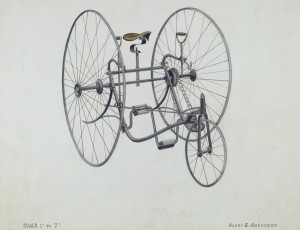
But here’s the difference: Cage isn’t trying to be distancing, or ironic. His point is: there’s no silence, there’s always music, even if you do nothing; and when you have this key, the effect of 4:33 is deeply metaphysical, life-affirming, joyous.
Think about the genesis of the piece. At Harvard, Cage goes into an anaerobic chamber– that’s a place so sound-proofed that all sound is blocked. So when you’re in there, you should experience total silence. But John hears two sounds, a high-pitched one and a low-pitched one. When he comes out, he learns that the high-pitched sound was his nervous system, and the low-pitched one, his circulatory system. So as long as we’re alive and conscious, there’s no such thing as silence –there’s always music. And that’s how he comes to write 4:33.
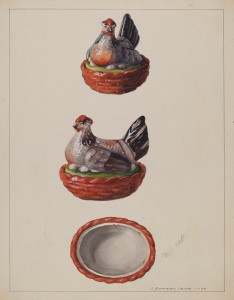 And then there’s Morton Feldman, Cage’s student and protégé, writing graphically notated pieces with much of the material left to the performer’s on-the-spot choice during a performance; or a string quartet, completely notated, but evolving with glacial slowness and lasting five hours. In his writings, Morton Feldman constantly refers to painters as his main inspiration, but always to the Abstract Expressionists, especially his friends Philip Guston and Mark Rothko. He never mentions Duchamp, but reading Duchamp’s Dialogues, I discover a definite link. I think it’s a very real, if unacknowledged, influence.
And then there’s Morton Feldman, Cage’s student and protégé, writing graphically notated pieces with much of the material left to the performer’s on-the-spot choice during a performance; or a string quartet, completely notated, but evolving with glacial slowness and lasting five hours. In his writings, Morton Feldman constantly refers to painters as his main inspiration, but always to the Abstract Expressionists, especially his friends Philip Guston and Mark Rothko. He never mentions Duchamp, but reading Duchamp’s Dialogues, I discover a definite link. I think it’s a very real, if unacknowledged, influence.
Duchamp says to Cabanne, “I wanted to create a static image of movement,” which he did, in the Large Glass–and you can connect this closely to Feldman’s very static movement of sound.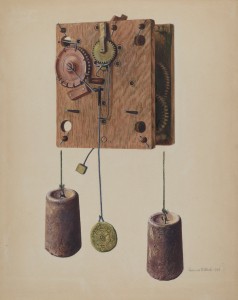
“A static image of movement.” A phrase that could serve as a very precise description of a Feldman piece—like the oriental rugs he studied so closely. In any case, it’s much closer to what’s going on in Feldman’s Rothko Chapel or For Philip Guston than the lushness you find in a Guston abstraction, or the monolithic, unmoving quality of a Rothko canvas. But unlike Duchamp, even if his means were often “completely in the grey matter,” Feldman was always reaching for the mystical.
So it’s interesting to see the difference when Duchampian methods and philosophy are applied by Cage and Feldman. Their compositions, while often complicated, not easily penetrated, and often puzzling, are not puzzles; and their humor (this more in Cage than Feldman, of course) is not ironic, but Zen-like and joyful. In Cage and Feldman, we certainly have a new canvas, maybe even one that Duchamp would approve of as “non-retinal,” but emotion is present, and keeps breaking through.
Grete Sultan said that John Cage was the most inspired person she’d ever met!
A quote from an essay on Feldman by the poet Frank O’Hara very succinctly makes clear the difference between Duchamp’s approach and that of Feldman and Cage. O’Hara says that Feldman “finds this metaphysical place of unpredictability and possibility.”
Duchamp’s place of unpredictability isn’t metaphysical. It’s distanced, ironic, grey-matter only. You might describe Cage and Feldman’s music, using Duchamp’s phrase, as not “retinal–” but it’s also emotional, spiritual and, in a very special way, uplifting –and (gasp!) inspired.
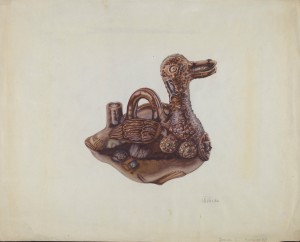 And what about Cage’s chance music: does it derive from Duchamp’s Three Standard Stoppages, pieces of thread randomly dropped onto a pane of glass? Duchamp describes this work as “canned chance…Pure chance…as a way of going against logical reality.” Or from Duchamp’s reaction to the Large Glass cracking when it was being shipped—that this chance event made it “a hundred times better… It’s the destiny of things.” Cabanne asks him about “the intervention of chance that you count on so often,” and Duchamp replies, “I respect it. I have ended up loving it.”
And what about Cage’s chance music: does it derive from Duchamp’s Three Standard Stoppages, pieces of thread randomly dropped onto a pane of glass? Duchamp describes this work as “canned chance…Pure chance…as a way of going against logical reality.” Or from Duchamp’s reaction to the Large Glass cracking when it was being shipped—that this chance event made it “a hundred times better… It’s the destiny of things.” Cabanne asks him about “the intervention of chance that you count on so often,” and Duchamp replies, “I respect it. I have ended up loving it.”
So it’s very possible to think of Duchamp as the catalyst and the inspiration for Cage’s use of chance operations–a method that begins with him tossing the I Ching coins to create the Music of Changes–and continues as his modus operandi for the rest of his composing life.

